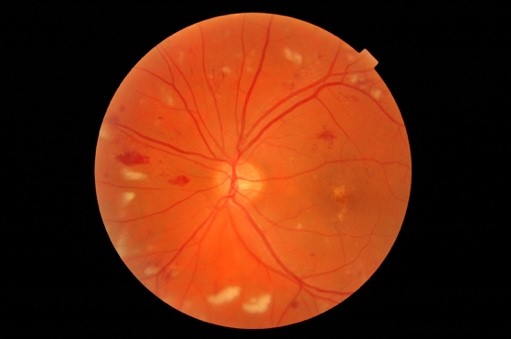Diabetic Retinopathy

Diabetic retinopathy is a complication of diabetes that affects the retina at the back of the eyes. The likelihood of developing diabetic retinopathy is closely linked to the duration of the diabetes, (85% after 25 years) and the control of the blood sugars; the less controlled your blood sugar is, the more likely you are to develop this eye complication. The condition can develop in anyone with Type 1 or Type 2 diabetes and will usually affect both eyes.
At first, diabetic retinopathy may cause no symptoms or only mild vision problems. It starts with the ‘mild or background’ stage which does not affect sight quality; progressing to the more complicated stage, termed ‘advanced or proliferative’ diabetic retinopathy which can lead to blindness.
How is it diagnosed?
In the UK, everyone with diabetes who is aged 12 or over is invited for diabetic eye screening once a year. Screening is offered because:
- diabetic retinopathy doesn't tend to cause any symptoms in the early stages
- the condition can cause permanent blindness if not diagnosed and treated promptly
- screening can detect problems in your eyes before they start to affect your vision
- if problems are caught early, treatment can help prevent or reduce your vision loss
The screening test involves examining the back of the eyes and taking photographs on an annual basis; those with sight threatening retinopathy may be advised to attend more regular appointments, or discuss treatment options with a specialist.
What are the treatments?
Careful management of your diabetes is the best way of avoiding vision loss.
Treatment for diabetic retinopathy is only necessary if screening detects problems that mean your vision is at risk. The main treatments for more advanced diabetic retinopathy are: i) laser treatment ii) injections of medication into your eyes; iii) an operation to remove blood or scar tissue from your eyes.
Useful websites
- Diabetes UK
https://www.diabetes.org.uk - Moorfields Eye Hospital: Diabetic retinopathy
https://www.moorfields.nhs.uk/condition/diabetic-retinopathy